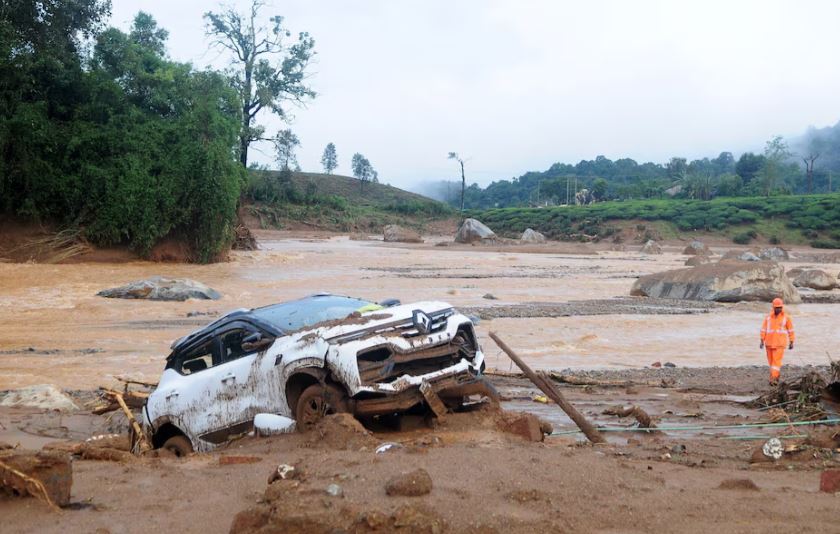Geological Survey of India Report Reveals NHAI’s Missteps
A preliminary report by the Geological Survey of India (GSI) has unveiled the devastating impact of “unscientific” construction on National Highway 66 (NH-66) in coastal Karnataka. The report, combined with intense rainfall, pinpoints these factors as the primary cause of the July 16th landslide that tragically claimed eight lives and disrupted a crucial transportation artery.
Landslide Causes Extensive Damage and Loss of Life
At 8:30 a.m. on July 16th, a catastrophic landslide unleashed a torrent of mud and debris in Shirur village, Ankola, obliterating a section of the Karwar-Mangaluru portion of NH-66. This vital highway, spanning 1,640 kilometers, connects Maharashtra’s Panvel with Kanyakumari in Tamil Nadu. Beyond the destruction of the highway, four houses, two high-tension power transmission towers, a tea stall, and two trucks were swept away. While eight bodies have been recovered, the search for three more missing individuals continues.
GSI Report Highlights Unscientific Construction Practices
The GSI report meticulously details the “unscientific” work done by the National Highway Authority of India (NHAI) on this vulnerable stretch. It states that natural drainage flows were disrupted during slope modifications for the highway’s construction. The steep gradient of the cut slope, coupled with highly weathered rock, thick debris, and insufficient toe support, created a recipe for disaster. The torrential rainfall acted as the catalyst, triggering the landslide and highlighting the potential for further damage due to the high relief and overburden material in the hill slope.
NHAI Defends its Role, Cites Multiple Contributing Factors
NHAI Regional Officer Vilas Brahmankar defended the agency’s role, emphasizing that the highway was built under Build-Operate-Transfer (BOT) and Public Private Partnership (PPP) models. While acknowledging the tragedy, he attributed the landslide to multiple factors, including the unusually heavy rainfall. NHAI has also formed an expert committee to investigate the matter further.
Local Concerns and Environmentalist Warnings Ignored
Local residents had previously raised concerns about the lack of continuity in the highway’s construction, with some sections remaining incomplete, leading to detours and traffic congestion. Additionally, environmentalists had warned about the challenges of infrastructure projects in Uttara Kannada’s coastal areas and ghats, which receive an average annual rainfall of 3,500-4,000 mm. They stressed the importance of assessing terrain conditions before embarking on such projects, a warning that appears to have been disregarded.
Key Takeaways and Lessons Learned
| Key Learning Points | Future Implications |
|---|---|
| Unscientific construction practices can lead to disasters. | Prioritize thorough geological assessments before construction. |
| High rainfall can exacerbate existing risks. | Incorporate robust drainage and slope stabilization measures. |
| Local concerns and expert advice should be heeded. | Foster transparency and communication with stakeholders. |
| Accountability is crucial in infrastructure projects. | Ensure rigorous oversight and enforcement of safety standards. |
This tragedy serves as a stark reminder of the importance of adhering to scientific principles and prioritizing safety in infrastructure development. By learning from the mistakes of the past, we can pave the way for a more resilient and sustainable future.
Soumya Smruti Sahoo is a seasoned journalist with extensive experience in both international and Indian news writing. With a sharp analytical mind and a dedication to uncovering the truth, Soumya has built a reputation for delivering in-depth, well-researched articles that provide readers with a clear understanding of complex global and domestic issues. Her work reflects a deep commitment to journalistic integrity, making her a trusted source for accurate and insightful news coverage.



